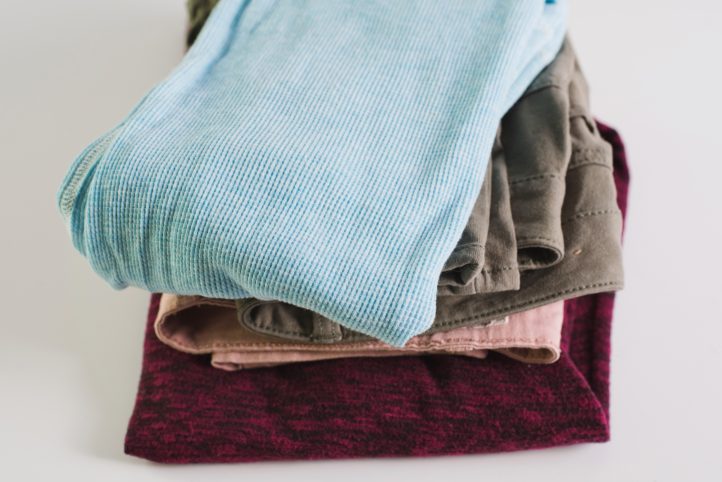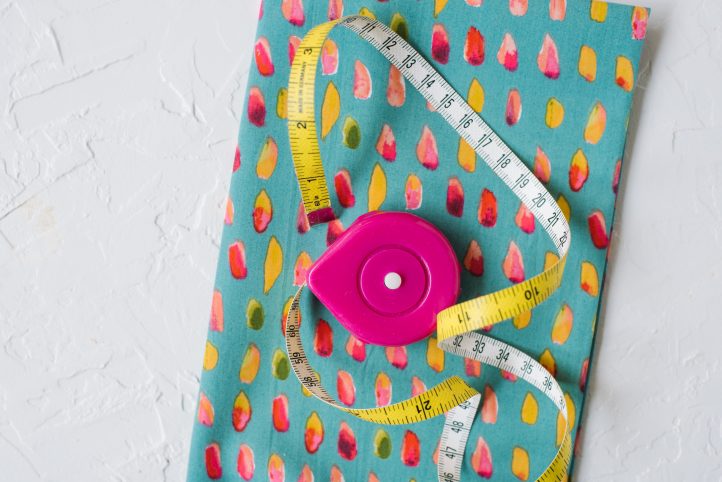
“Fast fashion” is a term that’s been appearing everywhere in the pop culture lexicon as of late, but if you aren’t familiar with shopping vintage, thrifting culture, or the sustainable fashion movement, you may not be aware of just how prevalent and dangerous fast fashion is. That’s why we’ve created this handy breakdown explaining what fast fashion is, why sustainability in garment making and clothing production is vital to our planet’s future, and most importantly, how your sewing skills can aid in creating clothing that’s eco-friendly and made to last. Get ready for a deep dive because today we’re taking you into the depths of all things sustainability.
What Is Fast Fashion?

Simply put, the term “fast fashion” refers to the mass production of cheaply made garments that are made at an increasingly fast pace to align with current fashion and social media trends. In her article from Good Housekeeping (“What Is Fast Fashion? How It’s Destroying the Environment”), Emma Seymour states: “The idea is to get the clothes into the hands of the consumer as soon as an item becomes trendy; the consumer then only wears the item a few times before discarding it.” The issues with fast fashion are multitude, ranging from the ethically questionable treatment of garment workers to the use of microplastics in the synthetic materials these clothes are made from, but today, we’re going to narrow it down and focus on the waste fast fashion creates.
Fast fashion itself is not a new concept. If you were alive in the thriving mall culture of the 1980s and 1990s, you’re probably aware of how often stores such as JCPenney, Old Navy or Wet Seal changed out clothing for each season, as well as the large range of options available to shoppers at any given time. With the rise of online shopping and especially social media apps like Instagram and TikTok, that pace of clothing production has exploded to keep up with the constantly changing trend cycle.
Quality vs. Quantity
We’ve defined what fast fashion is but let’s shift to the quality of these garments vs. the quantity of fast fashion being created. Brands like Shein and Forever 21 are now churning out mass quantities of clothing at an insanely fast pace, most probably more than can realistically be bought and worn by consumers, but equally problematic is that these garments are made with cheap, mostly synthetic materials that are not built to last; they’re built to be worn a handful of times and then tossed aside so consumers can purchase the next trend. Think of how many times you’ve ordered a sweater on Amazon, only to have the fabric pill or a seam tear after one or two wears and washes. The goal of fast fashion is not to create quality clothing. The goal is to grow profits by capitalizing on current trends as quickly as possible.
What does that leave us with? Mass amounts of clothes that are being thrown away. According to Viola Wohlgemuth, in their GreenPeace article “How Fast Fashion is using the Global South as a dumping ground for textile waste”, the bulk of unsold clothing and clothing donations that are actually resold is only “about 10 to 30 percent”. The majority of these clothes are sent to the Global South, primarily East and West Africa; the sheer amount of these clothes (most of which are unusable due to their poor quality) has wreaked havoc on the environment. An article from EcoWatch by Lydia Noyes states that “denim production alone is the second-largest polluter of fresh water on the planet” (“Fast Fashion 101: Everything You Need to Know). Fast fashion has led to fabric and clothing becoming expendable, simply to be tossed aside after a few wears. This is why sustainability is so important in garment making: the higher quality a garment is, the longer its life cycle is, which means less waste overall. Please keep in mind that this is only one aspect of this complicated issue; other variables such as poor working conditions for garment workers, lack of accountability of consumer culture, and use of materials that are unable to be recycled all play a part as well.
Using Your Sewing Skills to Fight Back

Fast fashion is such a huge industry that the mere thought of tackling the issue of clothing waste can make you feel faint. On an individual level, the best way to fight back against fast fashion is to be a conscientious consumer, which is where your sewing skills come into play. Your impact truly does start at home, which is why we’ve rounded up some excellent ideas for how you can use sewing to create a more sustainable wardrobe.
- Mend and Make Do – One of the best and easiest ways to fight fast fashion is to extend the life of the clothing you already own. This includes basic mending techniques like replacing a zipper or mending holes, skills sewists learn when they’re just starting out. If you’re new to mending clothes, we recommend Sophie Tarrant’s article on Mending Made Easy here. The second half of this idea is making do. Sometimes clothing just isn’t able to be mended, such as when it becomes threadbare from overwashing or ripped or torn in ways not easily patched. Combine your creativity and sewing skills to turn fabric scraps into small sewing projects. A faded t-shirt can become an adorable Christmas ornament with some stuffing and embroidery details. Old jeans can become household items like potholders or rugs. Embrace the challenge of making do with the materials you have on hand.
- Refashioning and DIY – Relatedly, transforming your old clothes through refashioning and DIY is another way to update your wardrobe for current trends without forking over your hard-earned cash to fast fashion companies. Our editors at We Like Sewing are huge fans of refashioning projects because it not only cuts down on fabric waste but lets you create one-of-a-kind pieces tailored to your personal taste. This plays into the DIY element as well, letting you embrace fun customization options like adding strategic rips to jeans, gems and other embellishments to bags or trying your hand at home dyeing.
- Sew Your Own Clothing – While perhaps the most obvious point on this list, making your own garments that you know are made to last is one of the best ways to fight fast fashion. Sewing your own clothing lets you take complete control over the garment-making process, from the pattern you select to fitting the garment to your measurements. There are a lot of ways to make your sewing more sustainable as well, such as practicing zero-waste sewing or using fabrics made from natural fibers. The goal with home sewing isn’t to catch up to the trends that fast fashion is cranking out. Rather, sewing your own clothing lets you slowly build a wardrobe that you’ll keep for years to come.
This quick list is just a jumping off point for changing the narrative about how we shop and how we sew. Things like upcycling already-existing fabric (don’t miss our article on The Thrifty Sewist’s Guide to Vintage Fabric here) or shopping small for patterns or fabric all contribute to a larger shift in how we approach thinking about clothes.
What types of articles are you interested in reading? Let us know in the comments below!

Great article ! I’m a thrift store shopper. 90% of my clothing is second hand.
Thank you so much for your kind comment, Kip! Have a great day 🙂 – Ashley, We Like Sewing